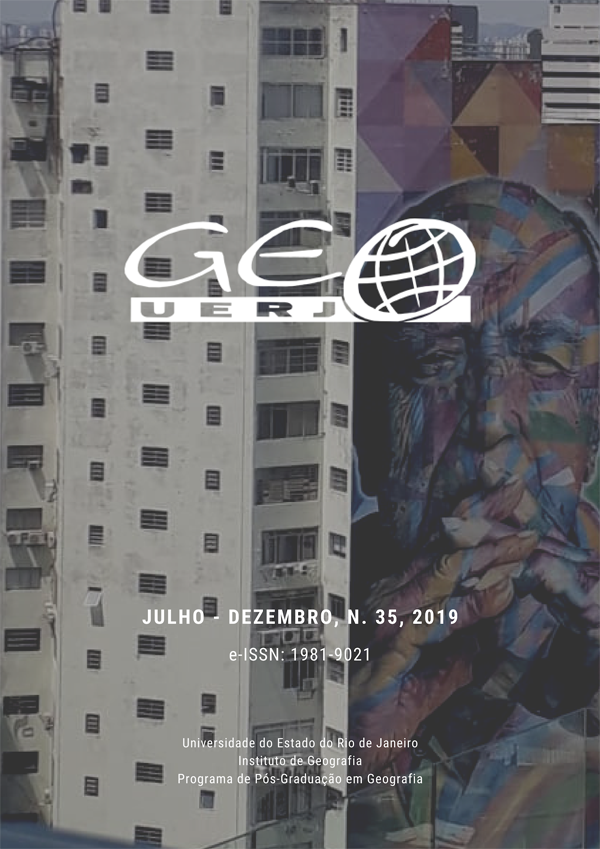LANDSCAPE COMPARTMENTS ON GEOSYSTEMIC BASIS IN THE UPPER REACH OF THE CANHOTO RIVER, BORBOREMA HIGHLANDS, NORTHEAST OF BRAZIL
DOI:
https://doi.org/10.12957/geouerj.2019.38012Keywords:
Geosystemic cartography, Modeling, Compartmentation, Landscape Synthesis, Northeast of BrazilAbstract
The term landscape has a large number of applications and meanings in geography, constituting a key concept for this science. In this work a compartmentalization synthesis was proposed for the landscapes of the upper reaches of the Canhoto River watershed, Pernambuco, in the morphostructural domain of the Borborema Highlands. The research focus seeks to contribute to the discussions concerning the analysis and evolution of the Brazilian semi-arid landscapes. The applied methodology was based on an adaptation of geosystemic cartography, to the physiographic context of eastern Northeast of Brazil. Five landscapes systems were identified that show particular dynamism and respond to their own controls. It was observed that the variation of the structural elements of these systems corresponds to changes in the environmental attributes, resulting in the formation of exceptional landscapes within the semi-arid regional context. Also, it was observed that the morphology of the landscapes in question also reflects the surface accumulation of paleoclimatic transformations occurring along the Holocene. It is concluded that the methodology of geosystemic cartographic modeling represents an important tool for describing the landscape for geomorphological purposes, constituting also an efficient mechanism of environmental analysis.Downloads
Download data is not yet available.
Downloads
Published
2019-12-21
How to Cite
Lima, Évio M., & Corrêa, A. C. B. (2019). LANDSCAPE COMPARTMENTS ON GEOSYSTEMIC BASIS IN THE UPPER REACH OF THE CANHOTO RIVER, BORBOREMA HIGHLANDS, NORTHEAST OF BRAZIL. Geo UERJ, (35), e38012. https://doi.org/10.12957/geouerj.2019.38012
Issue
Section
Articles
License
The copyright of articles published in Geo UERJ belongs to their respective authors with rights to first publication conceded to the journal. Every time that the article is cited and reproduced in institutional repositories or personal and professional web pages the link to the journal web page must be provided Geo UERJ.

The articles are simultaneously licensed under theCreative Commons Atribuição-Não Comercial-Compartilha Igual 4.0 Internacional.




